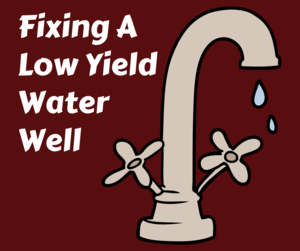CALL TODAY 1-800-441-6281
CALL TODAY 1-800-441-6281

Radon Mitigation. How To Remove Radon in Your Home’s Drinking Water
Well Water Treatment for Radon Contamination
Homes in New Hampshire and Massachusetts often have high levels of radon in their well water supply.
If you suspect your home is at risk for radon contamination, it is important to conduct the proper tests and understand your radon mitigation and treatment options before installing any new filtration equipment. Skillings & Sons has been helping homeowners test and treat water contaminated with radon for three decades and can help you choose the right option for your home.
RADON TESTING AND REMEDIATION WILL PROTECT YOUR FAMILY
Radon is colorless, odorless, and tasteless radioactive gas, produced when the element radium decays. It occurs naturally in rocks and soil and can dissolve in groundwater.
The radioactive particles from radon gas can get trapped in your lungs when you breathe it. As they break down further, these particles release small bursts of energy. This can damage lung tissue and increase your chances of developing lung cancer over the course of your lifetime. People who smoke have an even greater risk. Not everyone exposed to high levels of radon will develop lung cancer, but studies show that radon in indoor air is the second leading cause of lung cancer. The Centers for Disease Control estimate that 20,000 deaths a year in the U.S. are caused by breathing radon in indoor air.
Radon can occur in any home, but in New Hampshire, elevated radon levels are most common in the north, east and southeastern portions of the state. Skillings & Sons recommends that homeowners test to see if radon is in their water supply and if radon is entering the home through migration to determine what steps will need to be taken to reduce the contamination.
If the test results show radon in your well water, there are some options for removing the harmful gas. Aeration treatment can remove more than 99 percent of radon through a process of mixing clean air with the well water. The removed radon is then released into the air outside the home while the treated water is sent through the home plumbing system.
If you install an aeration system and also have iron and manganese in your water, you may notice an increased amount of staining from these minerals. Iron and manganese can also cause your aeration system to get clogged with particles. For this reason, you may want to treat your water to remove them. An aeration system and installation costs about $3,000-$5,000 and will need regular maintenance and occasional repairs.
Another method is granulated activated carbon filtration. Similar to a charcoal filter, water is passed through the carbon, removing the radon. This method is less expensive to purchase and install, but you will need to regularly replace the carbon filters. Radioactivity can also build up on the carbon, which is why this method is usually only used if radon levels are low.
An important factor to consider is where your filtration system will be installed. Some homeowners opt for a point-of-use filter, which is installed under the sink or on a water tap. These only treat a small portion of your water supply and are not effective when it comes to reducing the risk radon in water poses to your whole home. Skillings & Sons recommends a whole-house filtration system that filters water where it enters the home.
Regardless of the kind of system you choose, it is important to maintain home water treatment units properly. Failure to do so can lead to other water contamination problems. Homeowners who have questions about radon testing and treatment can contact our Skillings & Sons water professionals about their options.

